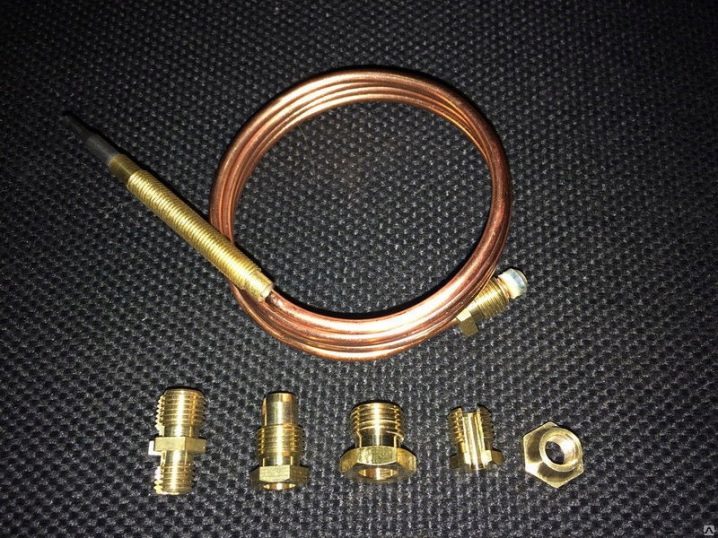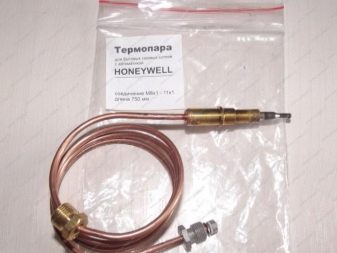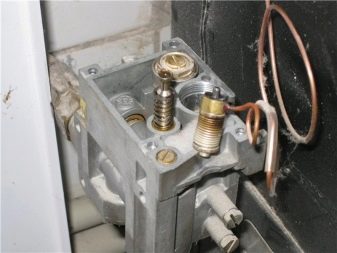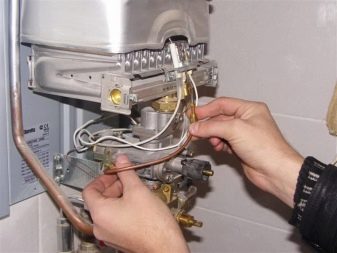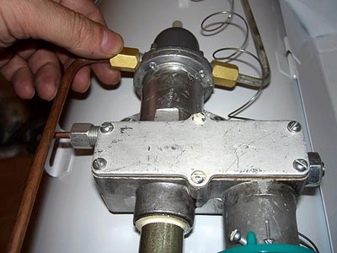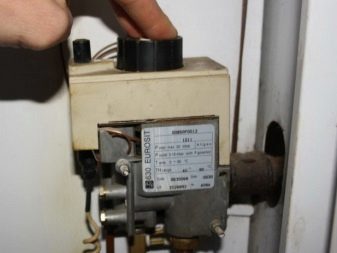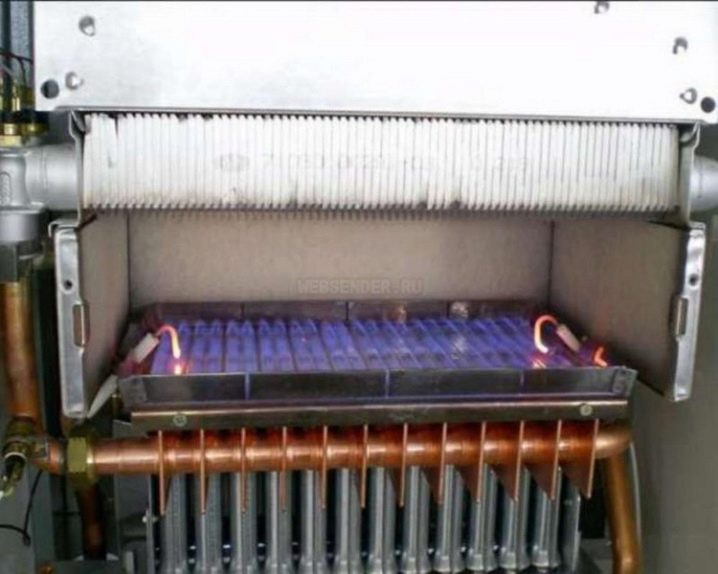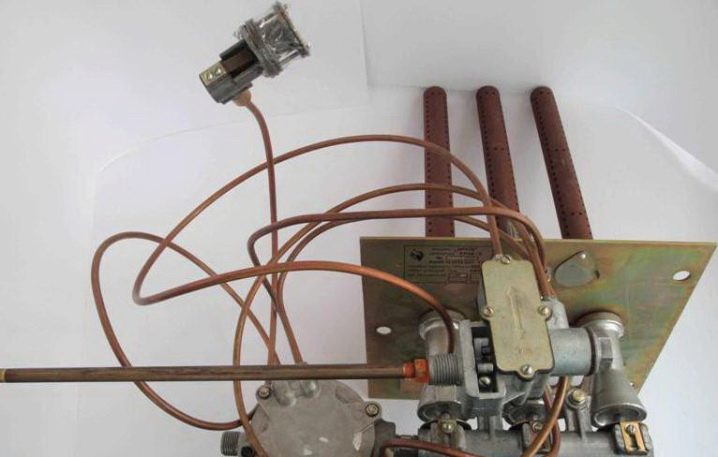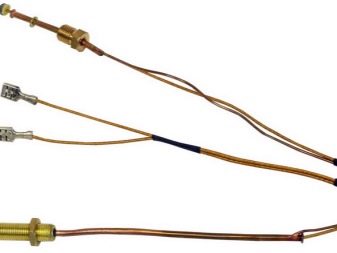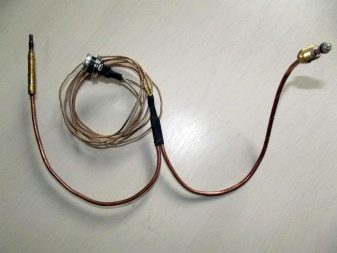Thermocouple for gas boiler: device and principle of operation

A thermocouple is practically the only instrument designed to measure extremely high temperatures. The device is widely used in various boiler equipment, monitoring the thermal mode and protecting the system from overheating.
Specifications
According to GOST P 8.585-2001, a thermocouple is a temperature-controlling device consisting of 2 conductors made of different alloys. Each alloy is distinguished by its resistance and electrical potential. Contact between conductors occurs both at one and several points, and in some models it is possible due to the presence of a compensation wire.Non-precious metals are used to make thermocouples.
The thermocouple looks very simple and consists of a molded case of the head, equipped with a lid and phosphorous pads, thanks to which the linear expansion of the electrodes is compensated. The tip of the product is used for reliable insulation of the working junction, and the protective tube consists of working and non-working sections. All connecting wires are routed through a nozzle with an asbestos gasket. If the electrodes are made of noble metals, products made of phosphorus or quartz can be used as protective tubes.
The accuracy of the instrument readings is one degree.that is considered to be quite a significant indicator in the operation of gas heating equipment, and does not allow to consider devices as instruments of high accuracy. The inaccuracy of temperature measurement is explained by the design features of the thermocouple. The fact is that the connection of the plates-conductors with each other occurs in different ways. In some models, the connection occurs by spot welding, in others - by soldering or crimping.
If the junction of two conductors is performed poorly, then the error will be one or more degrees. This is a critical margin of error, an increase in which may adversely affect the operation and safety of the boiler. Therefore, when choosing a thermocouple, it is necessary to focus on products of well-known and proven manufacturers, since for AOGV an error of one degree is an unaffordable luxury.
Operating principle
Thermocouples installed in gas boilers operate synchronously with an electromagnetic inlet valve, which, on the first signal of the thermocouple, immediately stops the flow of fuel. The operation of the thermocouple is completely based on the so-called Seebeck effect, when two conductors made of different materials come into contact with each other by one or several points, which are called the working part and are placed in the region of the open flame of the burner. The protective sheaths are welded or soldered to the opposite ends of these metal plates, the other end of which is held by the clamping nut in the socket of the automatic sensor.At the moment when the igniter and the burner of the boiler come on, the fuel is supplied in manual mode by pressing the rod.
As a result, the gas is supplied to the igniter and it starts to burn, heating the thermocouple located next to it with its flame. After 15 seconds, the fuel button is released and the fuel supply is due to the fact that the thermocouple began to generate a voltage that holds the fuel valve stem. The average voltage that the thermocouple is capable of producing, due to the potential difference at the cold ends, is in the range of 40-50 mV. In some high-tech models, the valves are characterized by maximum sensitivity and are kept in the open position until the input voltage drops below 20 mV.
Thermocouples are the main component of the gas boiler security system. In case of any malfunctions or breakdowns of the elements, as well as the sudden extinction of the torch, which in boilers with an open combustion chamber can occur due to a strong draft, the electromagnetic valves immediately activate and the fuel supply stops.
Advantages and disadvantages
Like any device, thermocouples have both advantages and disadvantages. Among the advantages of devices can be noted their low cost, due to the rather simple design, and long service life. The durability of devices is due to the absence of complex assemblies and frictional elements. An important advantage is a wide range of measured temperatures, as well as easy installation and disassembly of the device. It is impossible to ignore the multifunctionality of thermocouples, which allows the device to be used both as a flame control sensor and as a thermometer.
The disadvantages include the voltage limit, which is limited to 50 mV. This is one of the reasons for the errors in the readings that occur when measuring temperatures. The absence of a linear relationship between temperature values and potential difference is also a minus of the device. In addition, the part can not be repaired, and when it fails, it is replaced with a new one. However, sometimes the termination of the thermocouple due to poor contact. To resume the operation of the boiler, you need to remove the thermocouple, clean the conductors and install the device in place.
Species
The modern market of heating systems offers four types of thermocouples installed in gas boilers.
- Type E Models it is distinguished by high performance and a wide range of measured temperatures, which varies from -50 to +740 degrees. Conductor plates are made of constant and chromel. The factory product marking is represented by the letter TXKn.
- J type models differs in lower, in comparison with the first type, cost and is presented by marking of SFA. Contact plates are made of iron and constant, and the operating temperature range is from -40 to +600 degrees.
- Type K models are the most common and able to work at temperatures from -200 to +1350 degrees. The plates are made of aluminum and chromel, which requires some restrictions in their application. The fact is that in conditions of high carbon dioxide content, chromel is prone to the formation of green rot, quickly eroding the alloy and disabling the device. The product is marked TXA and is very sensitive to the slightest temperature fluctuations.
- N type models are a modification of the model E and are capable of operating at temperatures up to +1200 degrees. For the manufacture of plates used nishrosil nisil.Models of this type are considered the most accurate devices used in boiler equipment.
In addition to these types of thermocouples, there are models for the manufacture of which are used expensive types of metals. This significantly increases the cost and makes their installation in gas boilers unprofitable. For example, plates of extremely precise M-type devices are made of nickel and molybdenum. Such a device is installed in expensive vacuum boilers and is not used in gas equipment.
Thermocouples for gas boilers are an important safety device. They fully regulate the operation of the solenoid valve, are responsible for the supply of fuel and make the operation of the boiler stable and safe.
For instructions on how to check a thermocouple for a gas boiler, see the following video.
